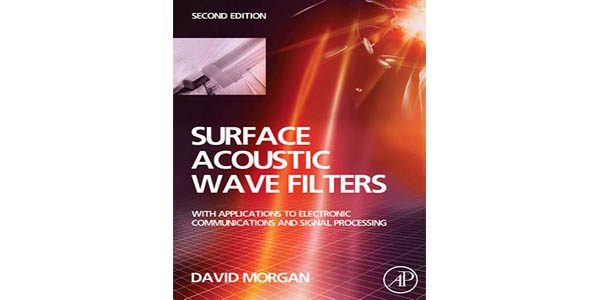دانلود کتاب Surface Acoustic Wave Filters
Surface Acoustic Wave Filters With Applications to Electronic Communications and Signal Processing
Surface Acoustic Wave Filters, this statement could hardly be more prophetic. In 1885 Rayleigh described an acoustic wave motion which plays an important part in seismology, and recently this has taken on a quite different significance as the basis for a huge range of electronic devices. The potential for electronics applications was first suggested in the 1960s, noting that the waves could provide substantial signal delays which would be inconvenient to obtain by conventional methods. They also give substantial versatility because transducers for generation and reception can be located anywhere in the propagation path, and lithographic fabrication techniques can provide almost arbitrary geometries with high precision. Consequently, a wide variety of devices have been developed, and they have found their way into many branches of electronics, including signal processing for radar and communications systems. The most notable application area is in bandpass filtering for communications, including the ubiquitous mobile telephone systems.
The book is written at a post-graduate level, assuming some familiarity with topics such as matrix algebra and the Y- and S-matrix descriptions for linear devices. However, much of the material should also be comprehensible at an undergraduate level, particularly the survey in Chapter 1. A prior knowledge of acoustic waves is not necessary, since this topic is summarized in Chapter 2. In fact, much of the theory in Chapters 3 and 5 follows simply from the assumption, often valid, that a piezoelectric substrate supports surface-wave propagation with velocity dependent on whether the surface is free or metallized. This approach is adequate for many devices, and it requires little further knowledge of acoustic waves. The theoretical developments make much use of Fourier analysis, and the required relations are summarized in Appendix A. Since the original book was published, it has become common to describe the behavior of unapodized transducers and gratings in terms of a scattering matrix called the P-matrix, so the present book makes use of this form. Appendix D considers the reciprocity and power-conservation constraints on this matrix, and also cascading techniques for analyzing devices with several components such as resonators. This Appendix also considers the all-important topic of multiple-transit signals in surface-wave devices.
Surface Acoustic Wave Filters
With Applications to Electronic
Communications and
Signal Processing
David Morgan
Impulse Consulting, Northampton, UK



